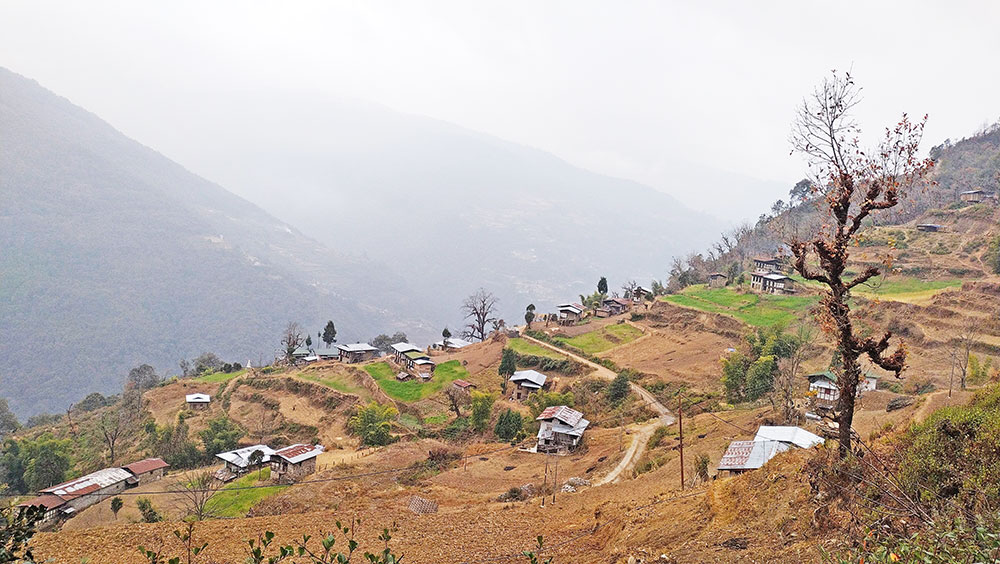Neten Dorji
For the past five years, the 50 households of Thongrong village in Phongmey gewog, Trashigang, had been struggling with inadequate drinking water as their water sources dried.
The frustrated villagers had raised the issue several times with the authorities but nothing happened to date. For now, they store drinking water that they received from the connected sources.
The villagers looked for other water sources but most were located uphill or on terrain unsuitable for laying pipes. Even if they managed to find a suitable water source, the water pipe was frequently washed away by flash floods.
In summer, the monsoon rainfall is helpful, said Tshering Yangchen, 56.
“There are many problems if there is no proper basic water supply starting from hygiene to vegetable cultivation even though our village is known for its fertile soil,” she said. “We have to depend on the limited amount of water that comes from the pipes.”

Thongrong residents say water shortage is worsening
However, each household had a water tap, prominently in front of the house, being constructed by the gewog administration. But they were all dry.
A villager, Dorji Dema, 53, said water intake and pipelines were blocked by the debris in summer and ice in winter.
“We reported the matter to the gewog through tshogpa and the gewog provided us with pipes, but it was not adequate,” said Lobzang Jamba.
An elderly resident pointed out that as dependent on rain water, it was important to conserve traditional water sources as during summer and spring season the water sources dried up causing a severe water crisis.
He said that to address the issue they must preserve and protect watershed areas whereby they don’t allow any development activities or construction.
Tshogpa Sonam Norbu acknowledged that his chiwog had an acute water shortage and each year water sources were drying up making it difficult for them to address the issue.
He said that 50 households under Thongrong chiwog were having a difficult time due to a severe water crisis, that there were water taps constructed in every household, but no water supply.
“Gewog have tried every possible way to address the issue but they failed due to inadequate budget,” he said. “The problem could only be solved if the government allocated a separate budget to address the issue.”
He said that with climate change and an increasing number of inhabitants in the area could be a factor that contributes to the shortage. “This year was the worst of it all,” he said.
National issue
Drinking water shortage has hit many communities across the country. At Phongmey in Trashigang, close to a thousand people were sharing water from a few seasonal springs.
Most of the villages had no fixed water sources. The villagers collected water from temporary springs that held water in summer when there was rain. The sources dried and disappeared during winter.
Among the 20 dzongkhags, Trashigang recorded the third lowest number of water sources, with 145 according to the Bhutan Hydromet Journal 2023. It was recorded that over the years, more than 100 water sources had dried up in Trashigang dzongkhag.
Meanwhile, It is recorded that out of 7,399 drinking water sources across the country, 69 water sources had dried up over the years, 1,856 were currently in the drying-up stage, and 5,457 were perceived to have not changed their discharge over the years.
“As per people’s perceptions gathered through consultations and focus group discussion, impact of climate change followed by forest degradation and deforestation were cited as major factors contributing to drying up of water sources in Bhutan,” the report stated.


